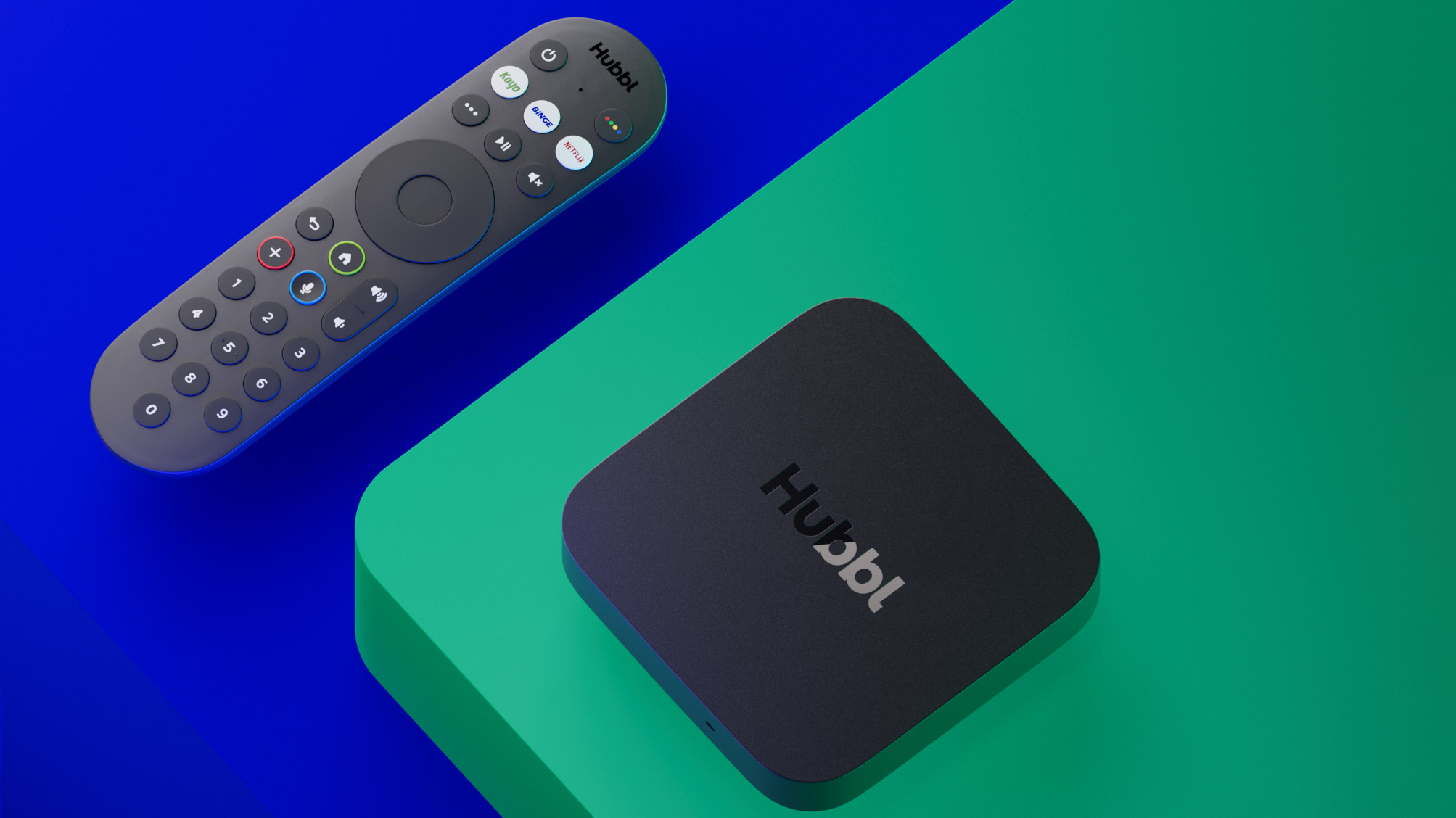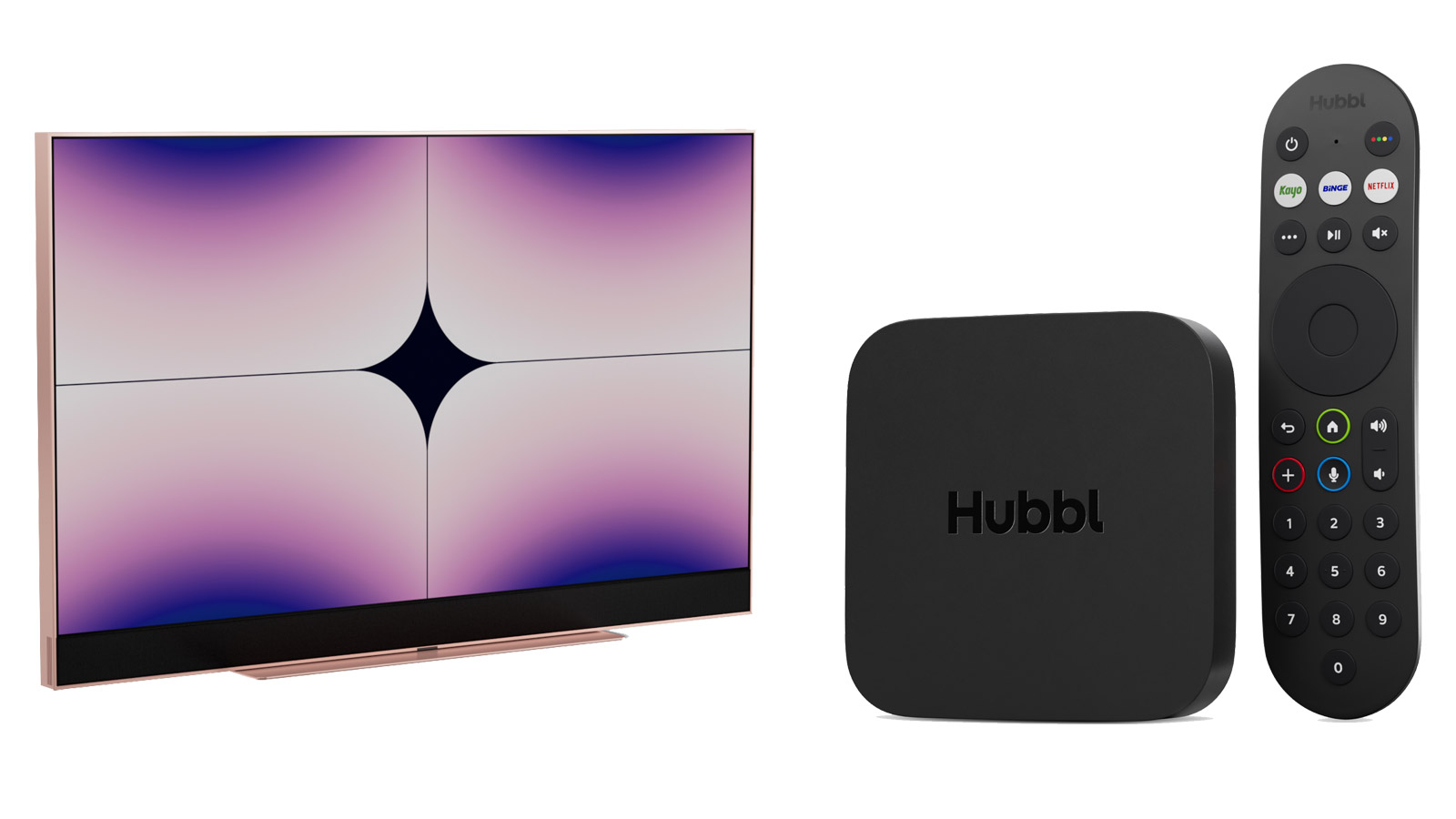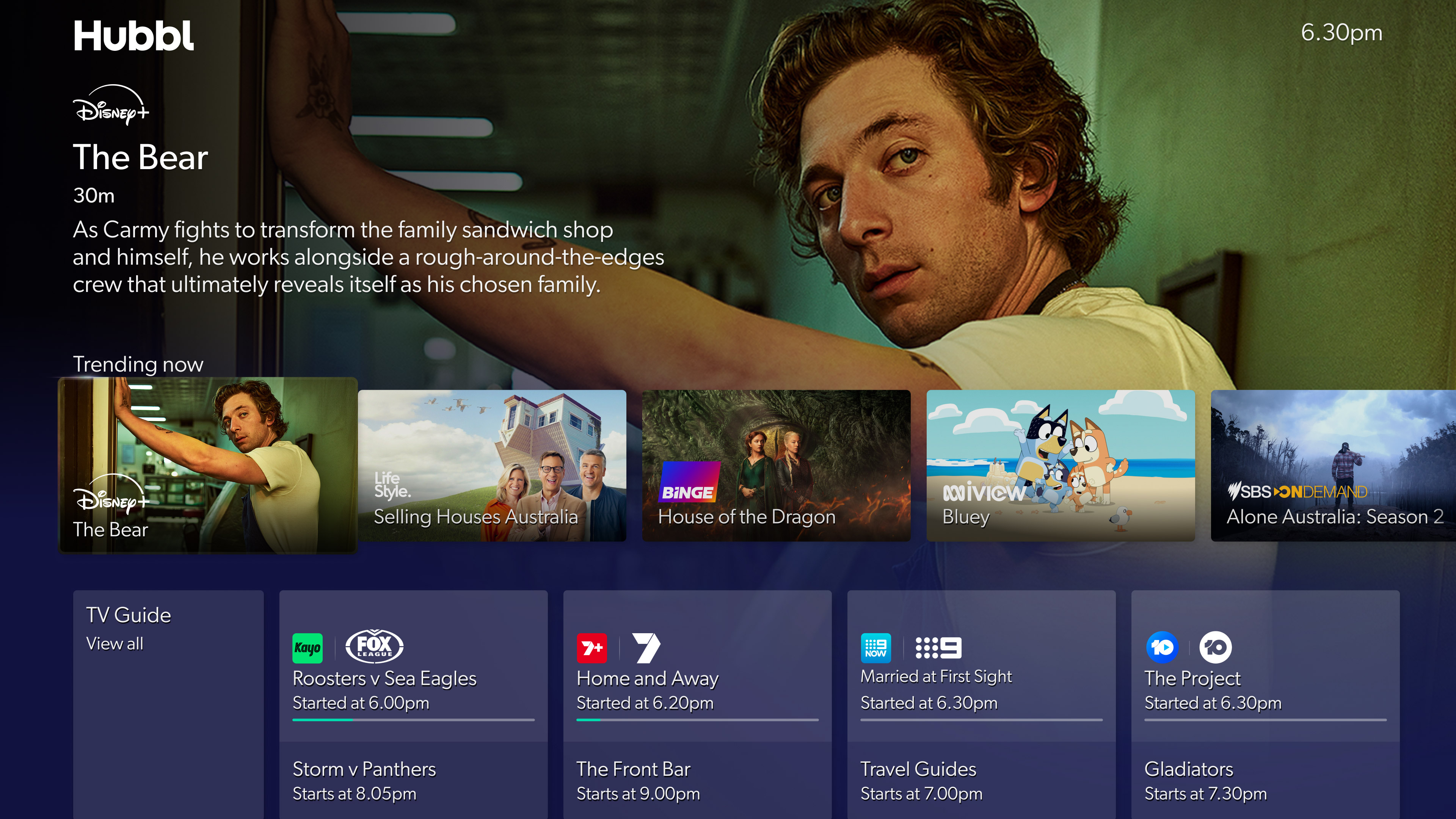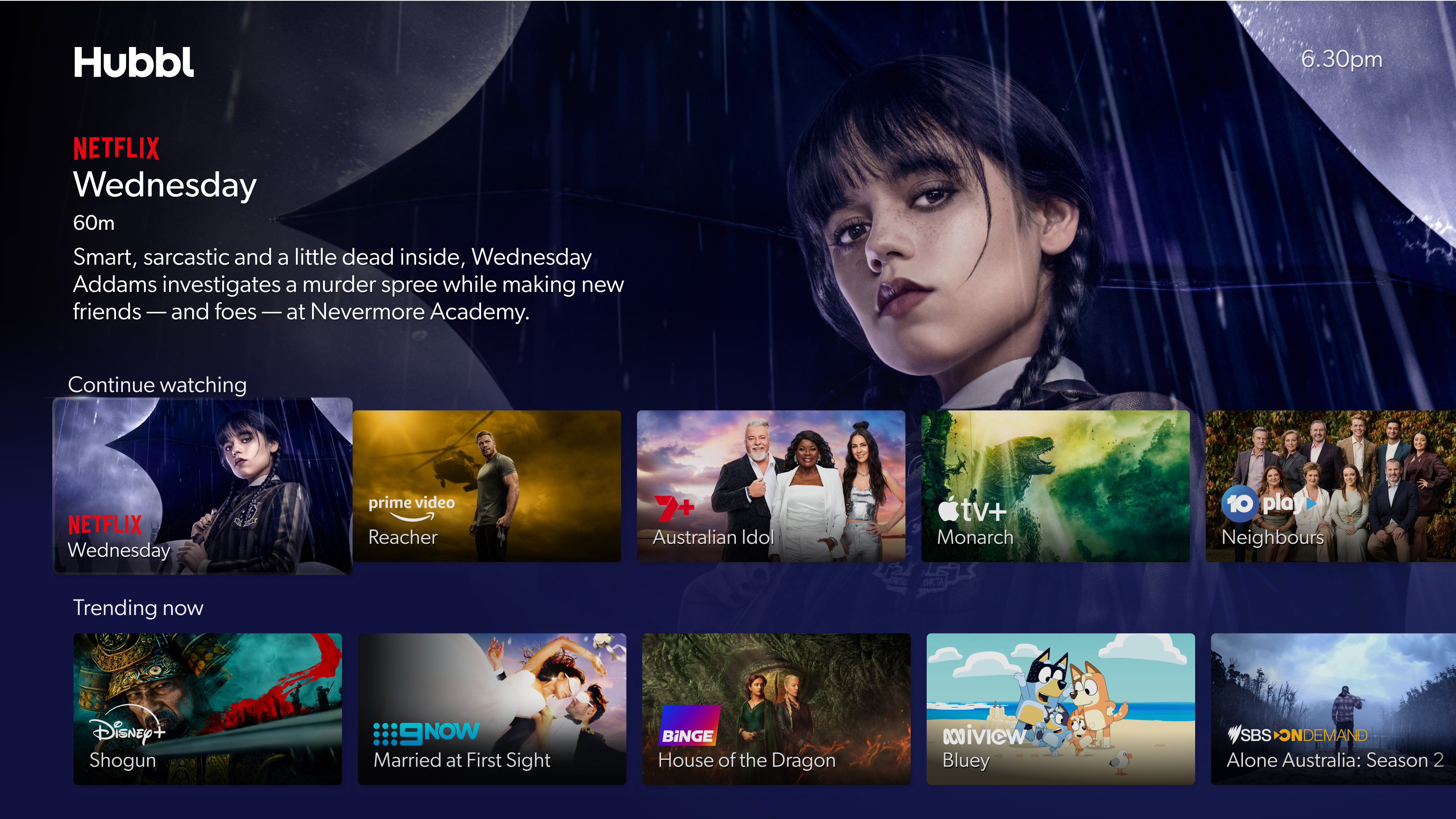New streaming platform Hubbl announced for Australia with claims of unrivalled recommendations
Coming soon as a plug 'n' play device and a fully integrated Hubbl Glass 4K TV

If you’ve ever scrolled endlessly through Netflix, Stan or any of the best streaming services in Australia, and found yourself unable to find something you know you’ll love to watch, then Hubbl could be just the thing to change your streaming habits forever.
Created by Foxtel, Hubbl is both a streaming platform and, soon, will also be available in two physical products: a small set-top box – not too dissimilar to the Apple TV 4K – and Hubbl Glass, a lifestyle TV that only requires power and an internet connection to stream free-to-air TV and content from virtually all of the major streaming apps.

Both devices are essentially the same as Sky Stream and Sky Glass that have been available in the UK for just over two years. Our colleagues at the UK TechRadar office have reviewed both devices, and you can follow the links to gain some greater insight into how Hubbl and Hubbl Glass may function when they’re released in Australia. However, the devices destined for Australian may differ to those in the UK, so don't take the UK reviews as being fully indicative of what we'll receive Down Under.
There will be differences, however, with the main one being the Sky devices require monthly subscriptions, as they also offer access to Sky’s suite of channels. Hubbl and Hubbl Glass meanwhile simply provide a gateway to video-on-demand content and free-to-air channels in Australia, and so only require a one-off upfront cost.
On a positive note, however, the Sky Stream did deliver gorgeous 4K Dolby Vision content and Dolby Atmos sound.
More personal recommendations

Hubbl’s main selling point is in its claimed ability to offer far greater “discoverability and personalisation,” than other streaming apps currently offer. All the major streaming platforms are supported, and so rather than having to exit one app and go into another to find something to watch, content from any and all apps you subscribe to will be presented on one screen, with recommended content based on your viewing habits front and centre.
Ultra HD 4K content and Dolby Atmos soundtracks are supported for the apps that offer such content, and a remote control with voice search functionality is used to navigate your way around either Hubbl or Hubbl Glass. Perhaps unsurprisingly, since Foxtel is involved, Kayo Sports and Binge get instant access buttons on the remote, alongside Netflix. A Watchlist button is also onboard so you can instantly add any TV shows or movies you want to remember to watch at a later date.
Sign up for breaking news, reviews, opinion, top tech deals, and more.
As an incentive to get users to subscribe to more streaming platforms and be shown a wider variety of content within the main Hubbl platform, Hubbl has also said customers can “stack up to five eligible streaming apps and save AU$15 per month on their subscriptions.” Exact details of which apps will be eligible for this offer have yet to be revealed.
There’s no official release date yet, but what has been revealed so far is pricing information for both devices. The Hubbl set-top box will launch at AU$99 and be available at Hubbl.com.au, JB Hi-Fi and Harvey Norman, while Hubbl Glass will be available in 55-inch and 65-inch variants, costing AU$1,595 and AU$1,995 respectively. Both will be available in five colours: Anthracite Black, Ocean Blue, Racing Green, Dusky Pink and Ceramic White. Hubbl Glass will be available exclusively at Harvey Norman and Hubbl.com.au.
Analysis
I’m definitely intrigued by Hubbl. I’m certainly guilty of spending more time scrolling through apps deciding what to watch than I do actually watching any content, and after 30 minutes or so of endless scrolling, I'll likely settle on something I've watched before and that I know I’ll like.
Most streaming apps and even select streaming devices and platforms – Fire TV, Google TV, Apple TV and Telstra-owned Fetch come to mind – do recommend content based on our viewing habits, so I’m keen to see if – and how – Hubbl will offer a more personalised service than these established brands.
I can understand how having content from all the apps I subscribe to on one easy to navigate screen would be beneficial, so what I’m most interested in is the accuracy of Hubbl’s recommendations.

I think the Hubbl set-top streaming device will be the easier sell, as it would simply replace any streaming device people may currently have, or be the first streaming device some customers purchase. Hubbl Glass, while certainly affordable when you consider the screen sizes on offer, will have to deliver a seriously impressive performance if it intends to replace the TVs currently found in Australian homes.
What I think will make Hubbl Glass popular is its design. From the images, it does look a little chunkier than some of the best TVs we've seen of late, but the fact it will be available in a range of colours is something we're not accustomed to. Until now, we've had to settle for black-framed (or occasionally silver/chrome-framed) TVs, so to be able to add a splash of colour to a living room or bedroom is something I think many Australians will appreciate. I'm already a fan of the Dusky Pink and Ceramic White models, and so I'm very keen to see these in the flesh.
Hubbl hasn’t revealed which company has made Glass, but it has revealed the specs. Most of them are relatively standard fare for a 4K TV, including support for Dolby Vision, HDR 10, HLG and Dolby Atmos. The TV has its own built-in Dolby Atmos sound system in a 3.1.2 channel output. The only slight moot point is a 60Hz refresh rate, so gamers won’t be able to take full advantage of their consoles.
While I’ll always welcome any new device or service that aims to make our lives easier, it will be interesting to see just how Hubbl will infiltrate an already populated market.

Max is a senior staff writer for TechRadar who covers home entertainment and audio first, NBN second and virtually anything else that falls under the consumer electronics umbrella third. He's also a bit of an ecommerce fiend, particularly when it comes to finding the latest coupon codes for a variety of publications. He has written for TechRadar's sister publication What Hi-Fi? as well as Pocket-lint, and he's also the editor of Australian Hi-Fi and Audio Esoterica magazines. Max also dabbled in the men's lifestyle publication space, but is now firmly rooted in his first passion of technology.